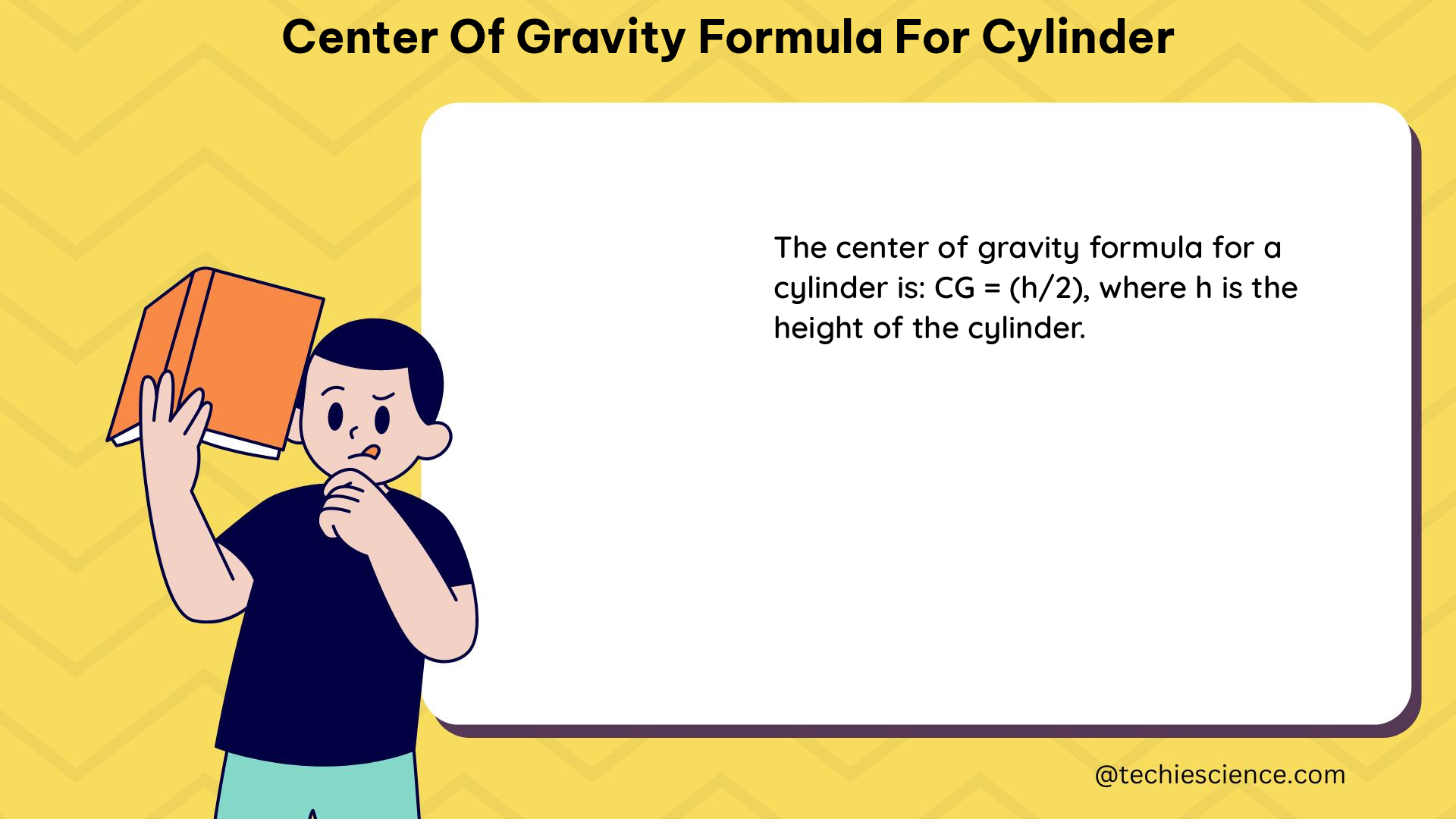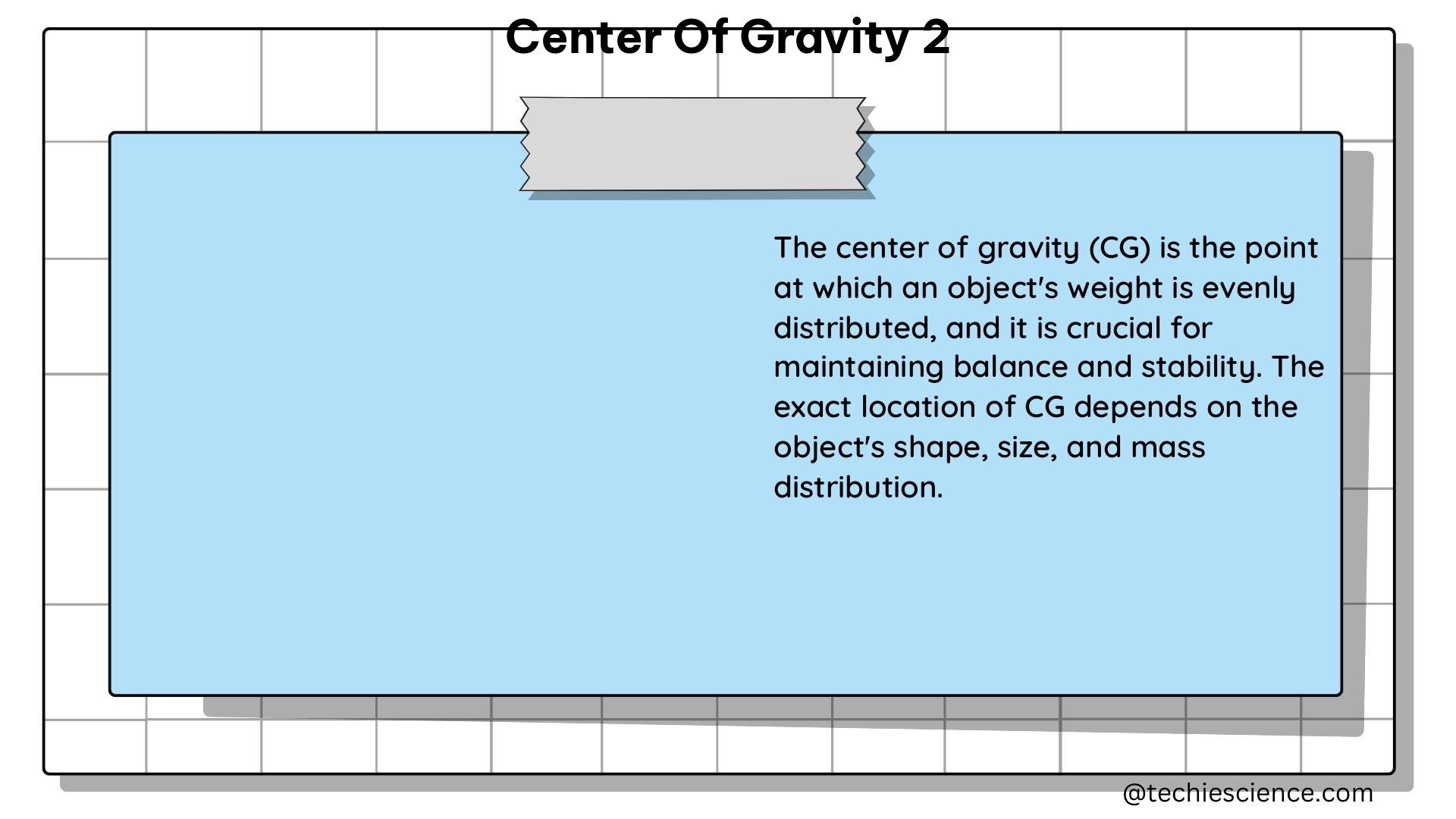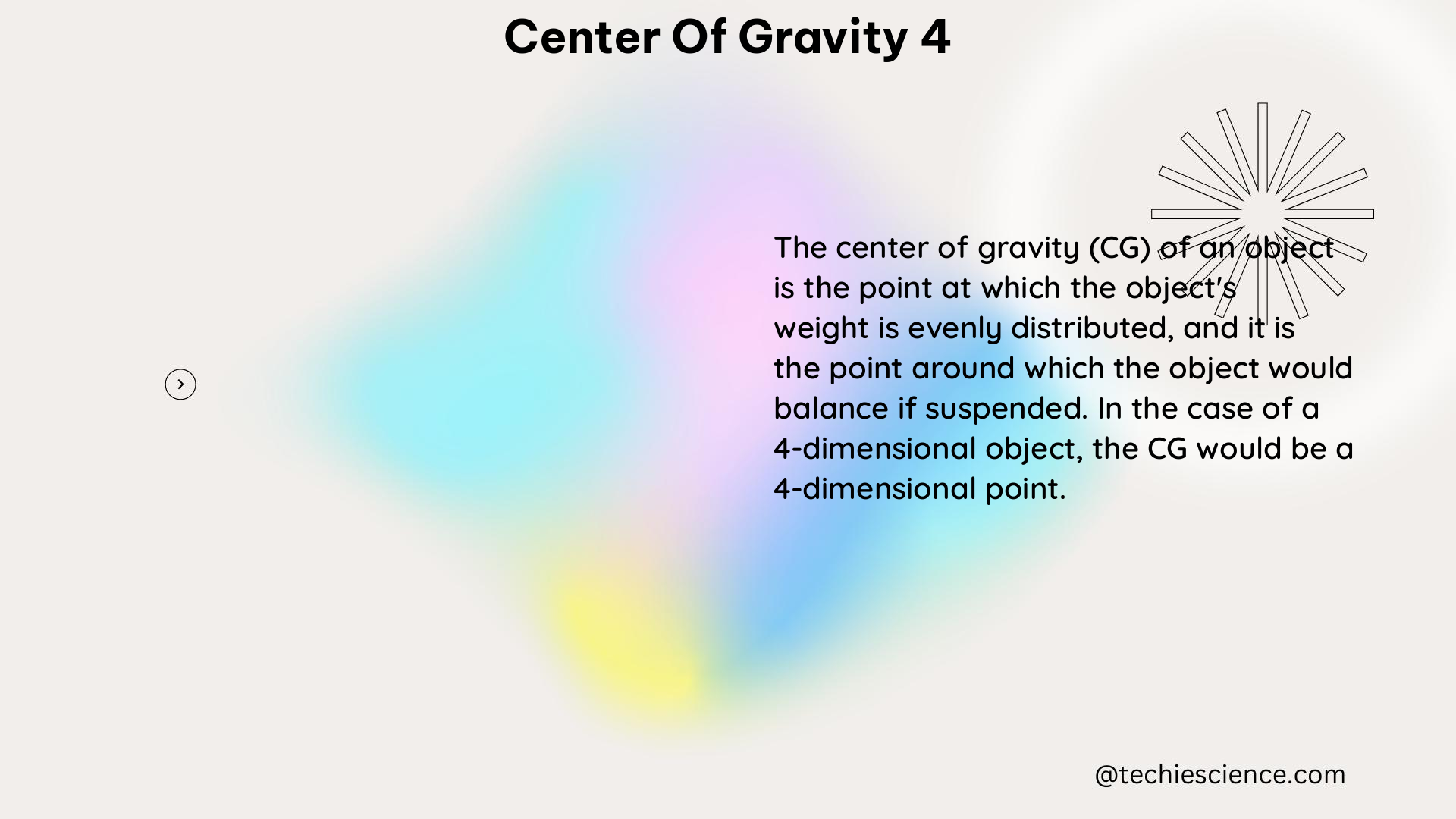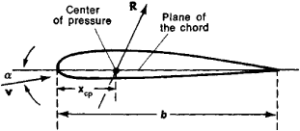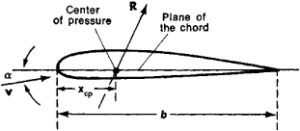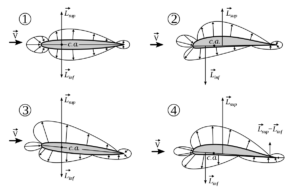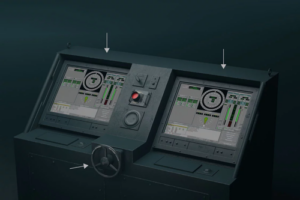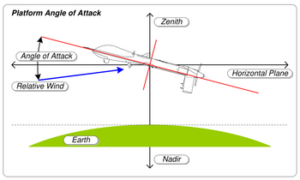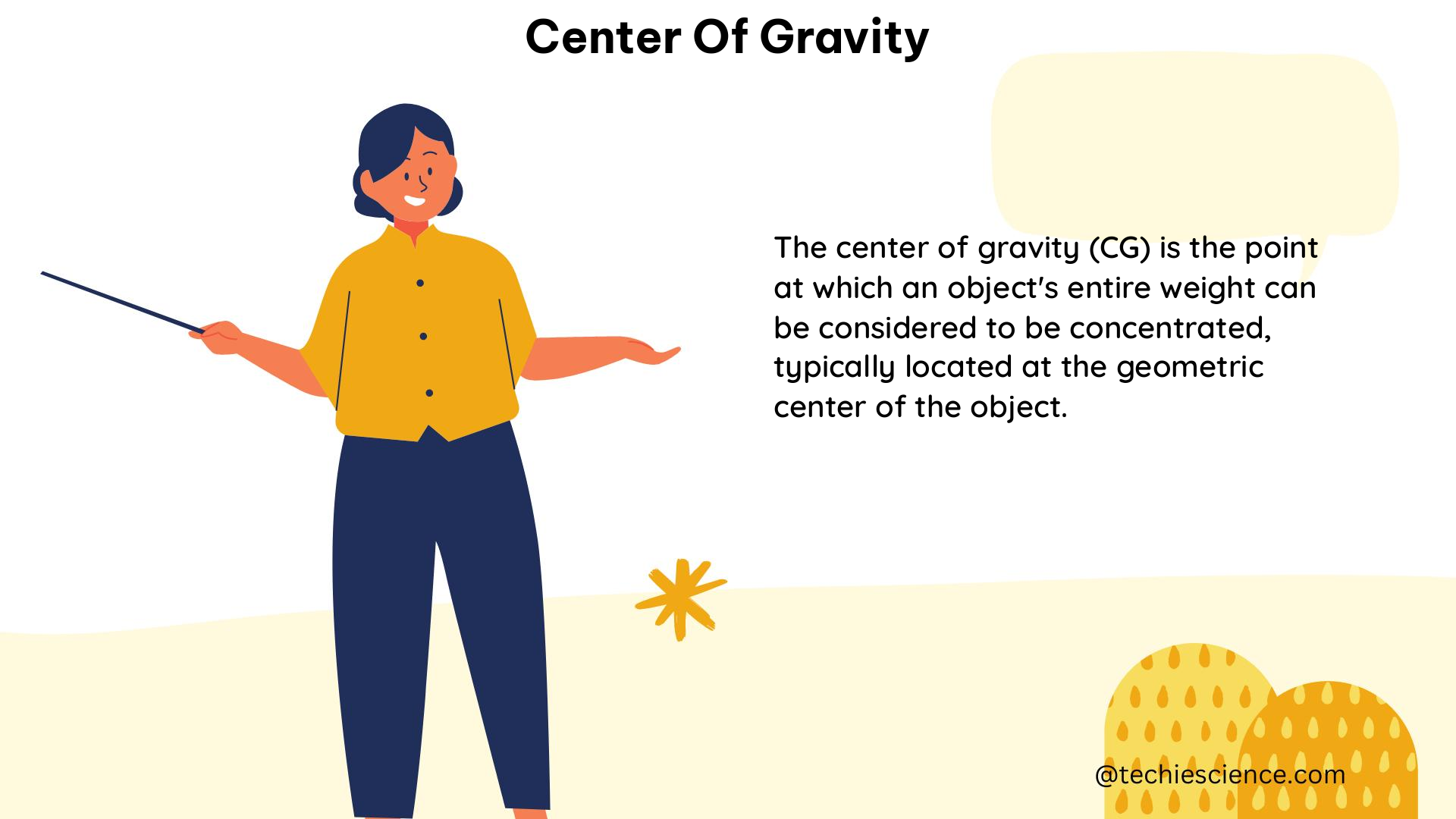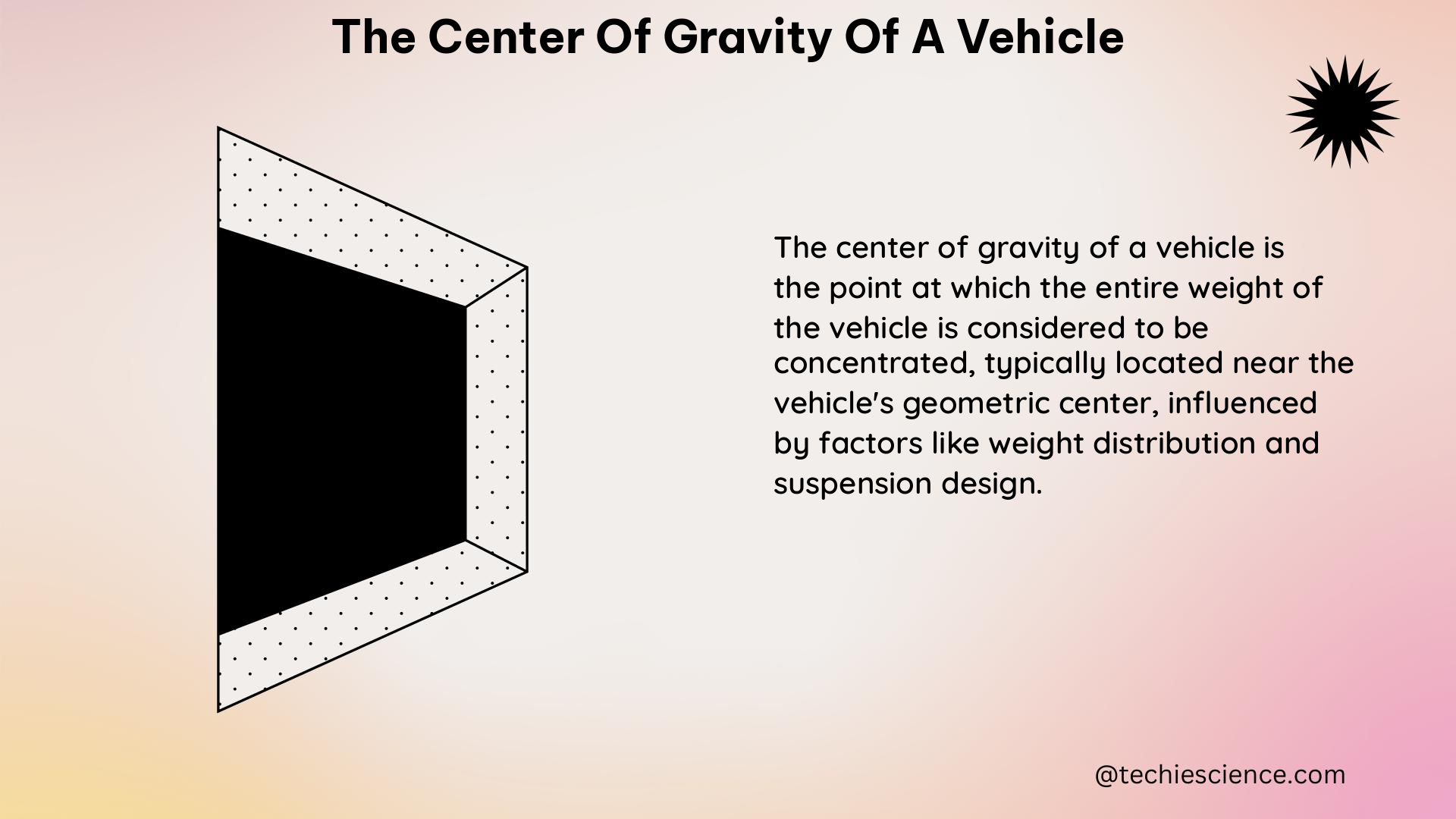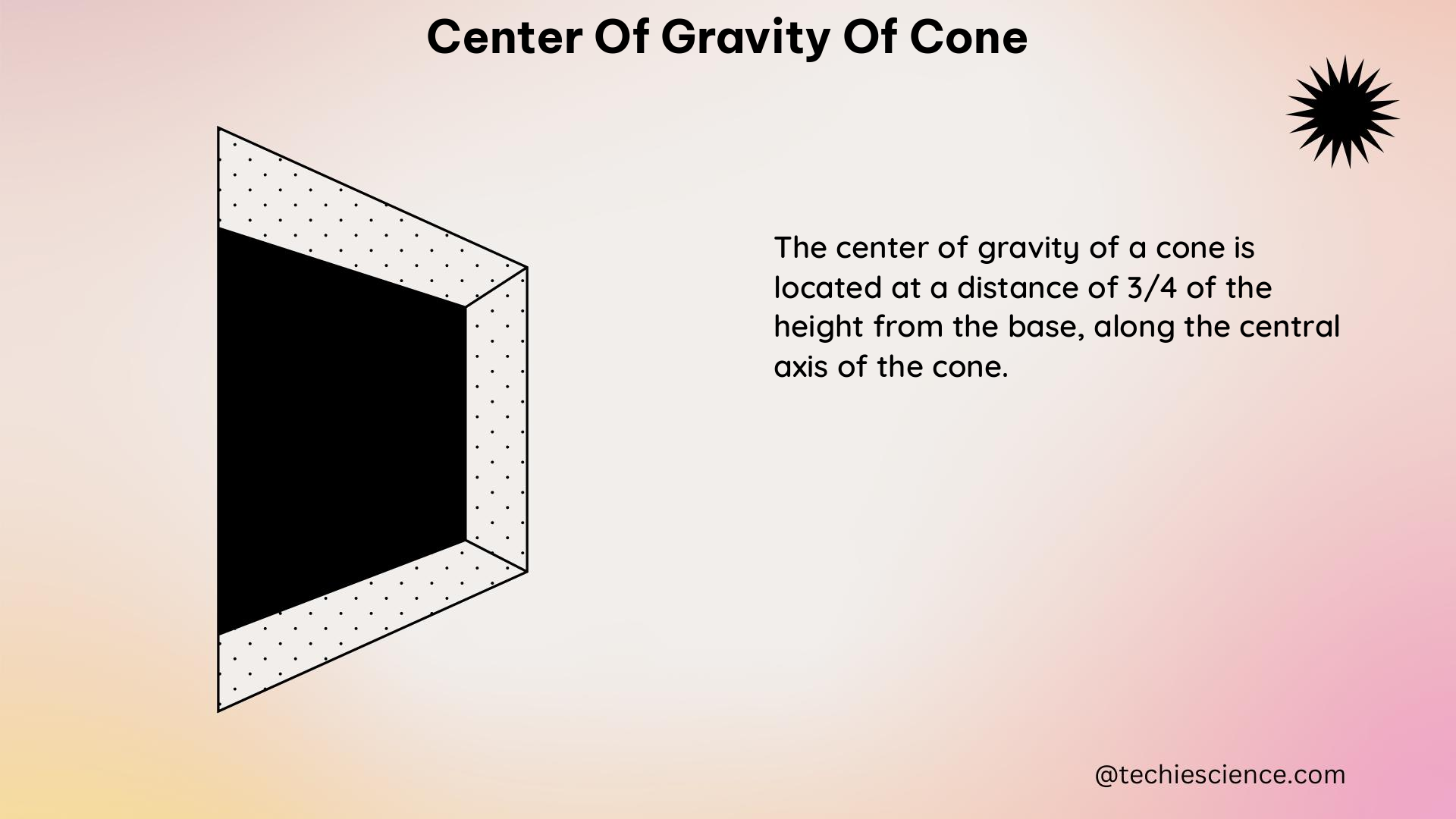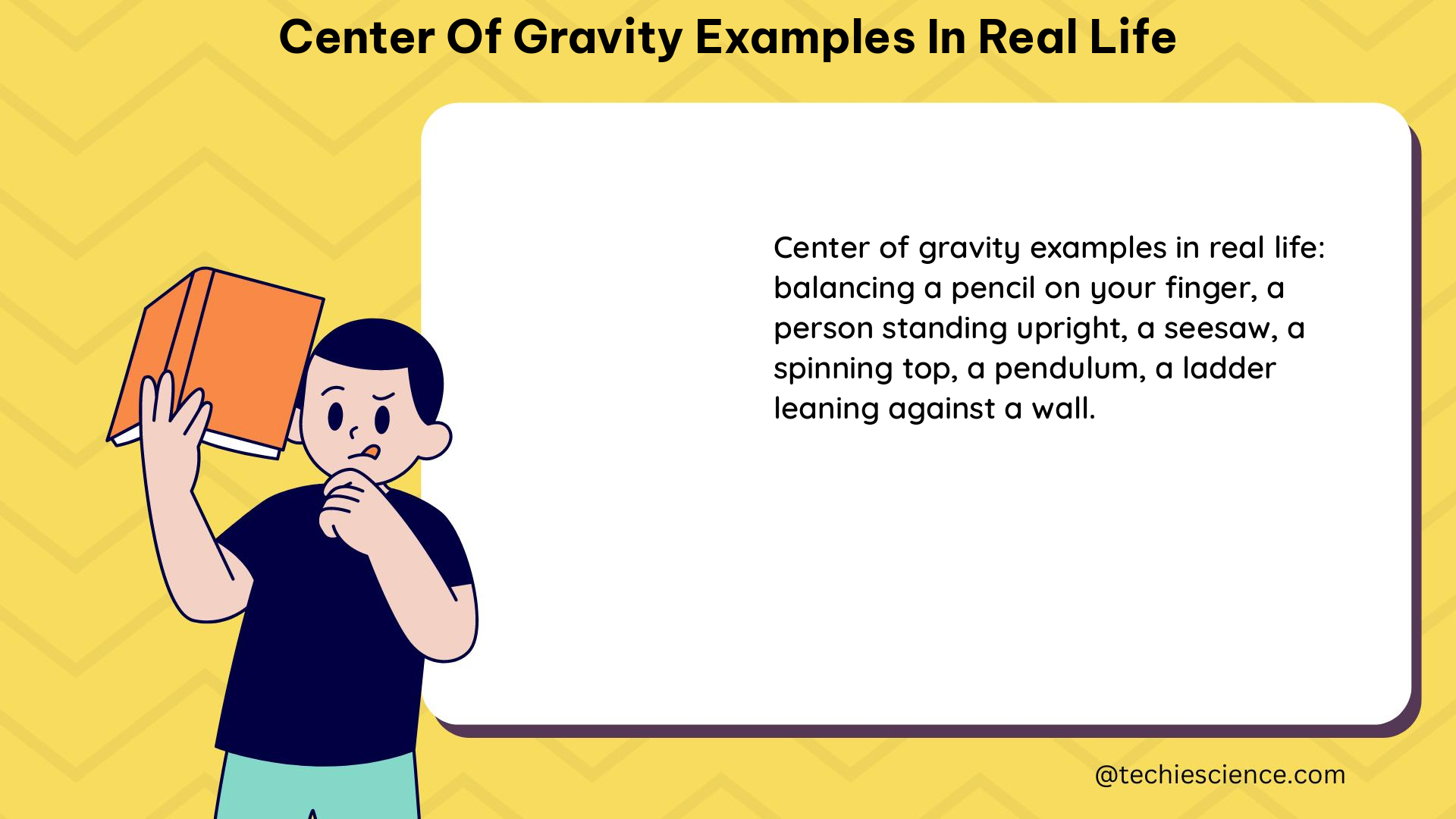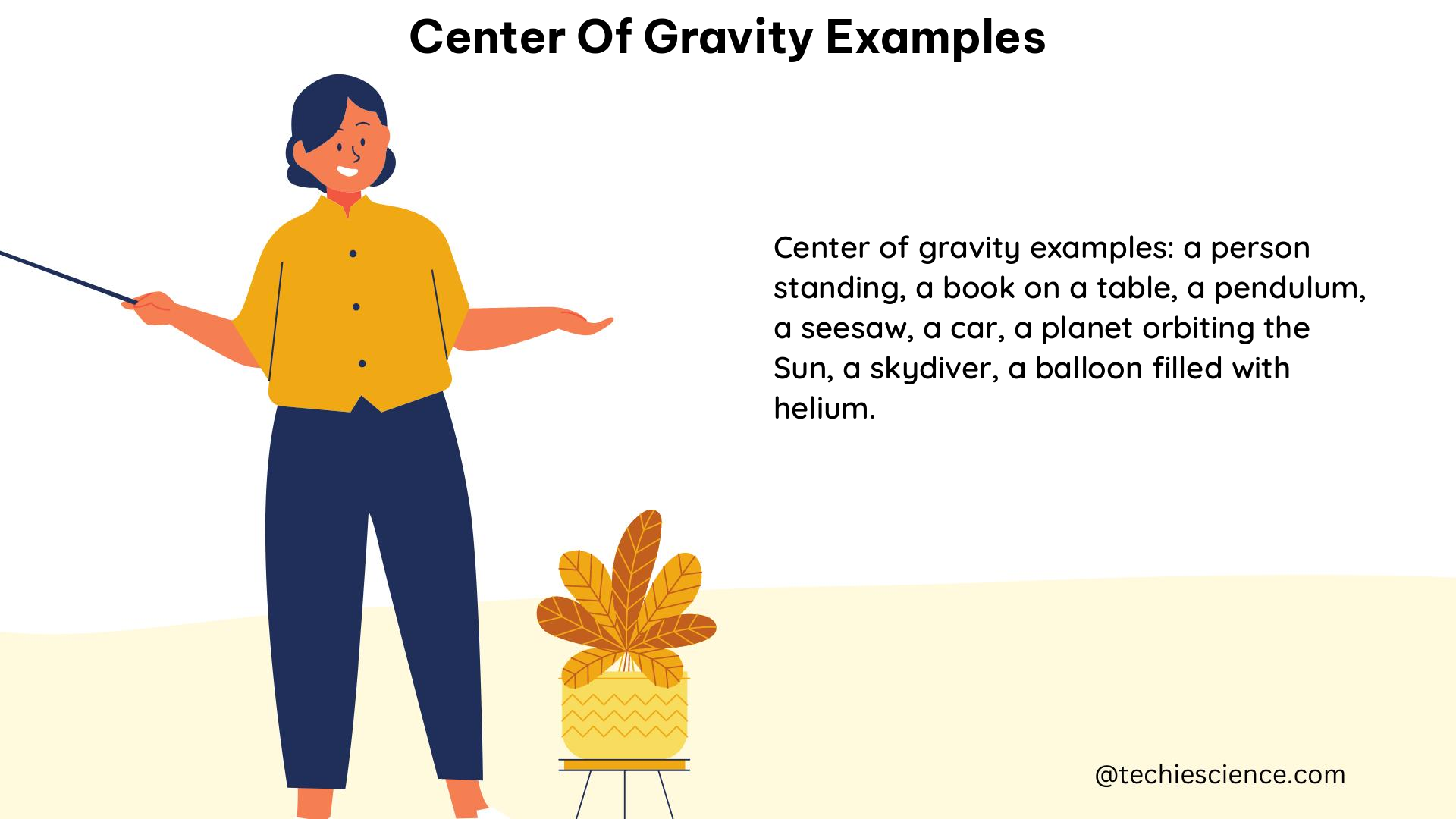The magnetic field at the center of a circular loop carrying a current is a fundamental concept in electromagnetism, with numerous applications in various fields of physics and engineering. This comprehensive guide will delve into the theoretical underpinnings, practical considerations, and measurement techniques related to this topic, providing a valuable resource for physics students and enthusiasts.
Understanding the Theoretical Foundations
Ampere’s Law and the Biot-Savart Law
The magnetic field at the center of a current loop can be derived using two fundamental laws of electromagnetism: Ampere’s Law and the Biot-Savart Law.
Ampere’s Law states that the line integral of the magnetic field around a closed path is proportional to the electric current enclosed by that path. Mathematically, this can be expressed as:
∮B⋅dl = μ0I
where B is the magnetic field, dl is an infinitesimal length element of the closed path, μ0 is the permeability of free space, and I is the electric current enclosed by the path.
The Biot-Savart Law, on the other hand, describes the magnetic field generated by an element of current. It states that the magnetic field dB at a point due to an infinitesimal current element I dl is given by:
dB = (μ0 / 4π) * (I dl × r) / r^2
where r is the vector from the current element to the point of interest.
By applying these laws to a circular current loop, one can derive the formula for the magnetic field at the center of the loop.
Derivation of the Magnetic Field Formula
Consider a circular loop of radius R carrying a current I. The magnetic field at the center of the loop can be calculated as follows:
- Divide the loop into infinitesimal current elements
I dl. - Apply the Biot-Savart Law to each current element to find the contribution to the magnetic field at the center.
- Integrate the contributions around the entire loop to obtain the total magnetic field.
The resulting formula for the magnetic field at the center of the loop is:
B = (μ0 * I) / (2 * R)
where μ0 is the permeability of free space, I is the current flowing through the loop, and R is the radius of the loop.
This formula provides an accurate representation of the magnetic field at the center of a circular current loop, assuming the loop is perfectly circular and the current is uniformly distributed around the loop.
Factors Affecting the Magnetic Field
While the formula B = (μ0 * I) / (2 * R) provides a good approximation of the magnetic field at the center of a current loop, there are several factors that can influence the actual magnetic field:
- Loop Geometry: The formula assumes a perfectly circular loop. Deviations from a circular shape, such as an elliptical or irregular loop, can affect the magnetic field distribution.
- Current Distribution: The formula assumes a uniform current distribution around the loop. In practice, the current may not be evenly distributed, leading to variations in the magnetic field.
- Proximity to Other Magnetic Fields: The presence of other magnetic fields, such as those generated by nearby current-carrying conductors or magnetic materials, can interact with the magnetic field of the current loop, altering the overall field.
- Temperature and Material Properties: The electrical and magnetic properties of the loop materials, such as the wire’s resistivity and the permeability of the loop, can change with temperature, affecting the magnetic field.
These factors should be considered when using the formula or when measuring the magnetic field at the center of a current loop.
Practical Considerations and Applications
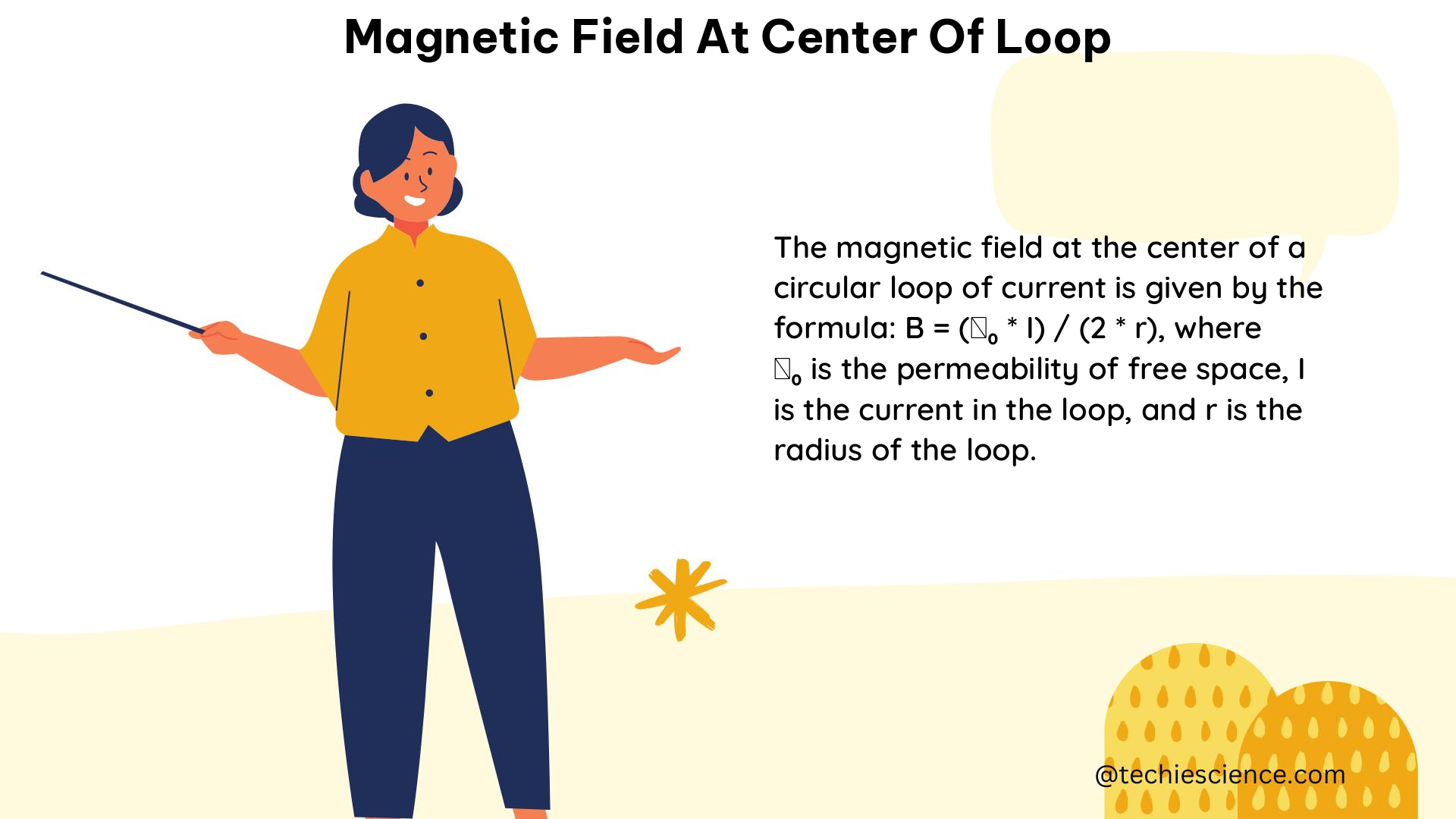
Numerical Examples
Let’s consider a few numerical examples to illustrate the application of the magnetic field formula:
- Example 1: A circular loop with a radius of 0.1 m carries a current of 2 A. Calculate the magnetic field at the center of the loop.
B = (μ0 * I) / (2 * R)
B = (4π × 10^-7 T·m/A) × (2 A) / (2 × 0.1 m)
B = 0.04π T
- Example 2: A circular loop with a radius of 0.5 m carries a current of 5 A. Calculate the magnetic field at the center of the loop.
B = (μ0 * I) / (2 * R)
B = (4π × 10^-7 T·m/A) × (5 A) / (2 × 0.5 m)
B = 0.1π T
These examples demonstrate how the magnetic field at the center of a current loop can be calculated using the provided formula.
Practical Applications
The magnetic field at the center of a current loop has numerous practical applications in various fields, including:
-
Magnetic Resonance Imaging (MRI): MRI systems use strong, uniform magnetic fields to align the magnetic moments of hydrogen protons in the human body. The magnetic field at the center of the MRI coils is a critical parameter in the design and operation of these systems.
-
Electric Motors and Generators: The magnetic field at the center of the armature windings in electric motors and generators plays a crucial role in the conversion of electrical energy to mechanical energy and vice versa.
-
Particle Accelerators: Circular particle accelerators, such as cyclotrons and synchrotrons, rely on the magnetic field at the center of their circular paths to guide and accelerate charged particles.
-
Magnetic Levitation: Maglev trains use the magnetic field at the center of their guideway coils to levitate the train, reducing friction and enabling high-speed transportation.
-
Magnetic Sensors: Devices like Hall effect sensors and fluxgate magnetometers utilize the magnetic field at the center of their sensing elements to measure the strength and direction of magnetic fields.
These applications highlight the importance of understanding and accurately calculating the magnetic field at the center of a current loop.
Measurement Techniques and Instrumentation
Measuring the magnetic field at the center of a current loop requires specialized instrumentation and techniques. Some common methods and instruments used for this purpose include:
Hall Effect Sensors
Hall effect sensors are widely used to measure magnetic fields. They operate by detecting the voltage generated across a thin semiconductor material when a magnetic field is applied perpendicular to the material. Hall effect sensors can provide accurate and precise measurements of the magnetic field at the center of a current loop.
Fluxgate Magnetometers
Fluxgate magnetometers are another type of instrument used to measure magnetic fields. They consist of a ferromagnetic core wrapped with two coils: a primary coil that generates a magnetic field and a secondary coil that measures the changes in the magnetic field. Fluxgate magnetometers can provide high-sensitivity measurements of the magnetic field at the center of a current loop.
Search Coil Magnetometers
Search coil magnetometers, also known as induction magnetometers, measure the magnetic field by detecting the induced voltage in a coil of wire placed in the magnetic field. These instruments can be used to measure the magnetic field at the center of a current loop, particularly for time-varying or pulsed magnetic fields.
Calibration and Accuracy
Regardless of the measurement technique used, it is essential to calibrate the instruments to ensure accurate and reliable measurements of the magnetic field at the center of a current loop. Calibration can be performed using reference standards or by comparing the measurements with theoretical calculations.
The accuracy of the magnetic field measurements can be affected by various factors, such as the sensitivity and linearity of the instrument, the alignment of the sensor with the magnetic field, and the presence of external magnetic fields. It is important to consider these factors and take appropriate measures to minimize measurement errors.
Conclusion
The magnetic field at the center of a current loop is a fundamental concept in electromagnetism with numerous practical applications. By understanding the theoretical foundations, practical considerations, and measurement techniques related to this topic, physics students and enthusiasts can develop a comprehensive understanding of this important phenomenon.
This guide has provided a detailed exploration of the magnetic field at the center of a current loop, covering the derivation of the formula, the factors that can influence the magnetic field, practical applications, and measurement techniques. With this knowledge, readers can confidently apply the principles of electromagnetism to solve problems, design systems, and further their understanding of the physical world.
References:
- Griffiths, D. J. (2013). Introduction to Electromagnetism (4th ed.). Pearson.
- Serway, R. A., & Jewett, J. W. (2018). Physics for Scientists and Engineers with Modern Physics (10th ed.). Cengage Learning.
- Halliday, D., Resnick, R., & Walker, J. (2013). Fundamentals of Physics (10th ed.). Wiley.
- Nave, C. R. (n.d.). Magnetic Field of a Current Loop. HyperPhysics. http://hyperphysics.phy-astr.gsu.edu/hbase/magnetic/curloo.html
- Magnetic Field Measurement Techniques. (n.d.). National High Magnetic Field Laboratory. https://nationalmaglab.org/education/magnet-academy/learn-the-basics/magnetic-field-measurement-techniques
